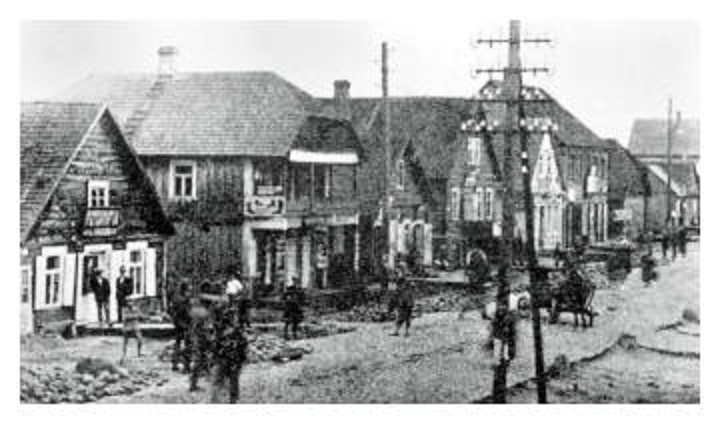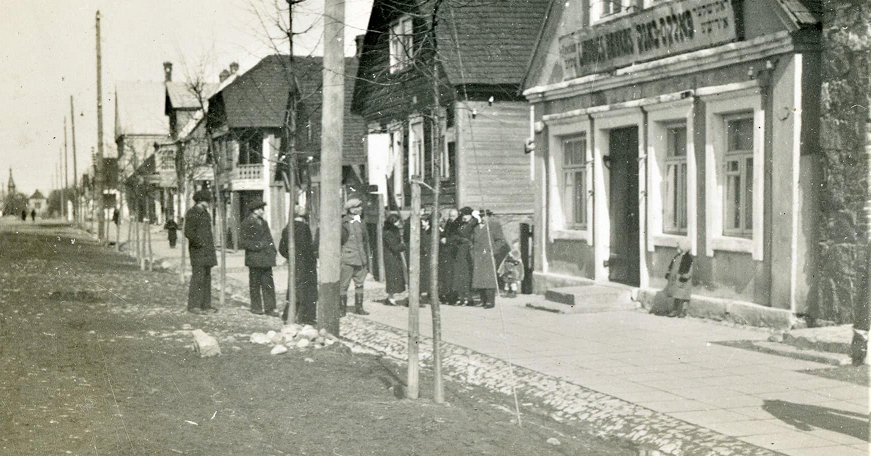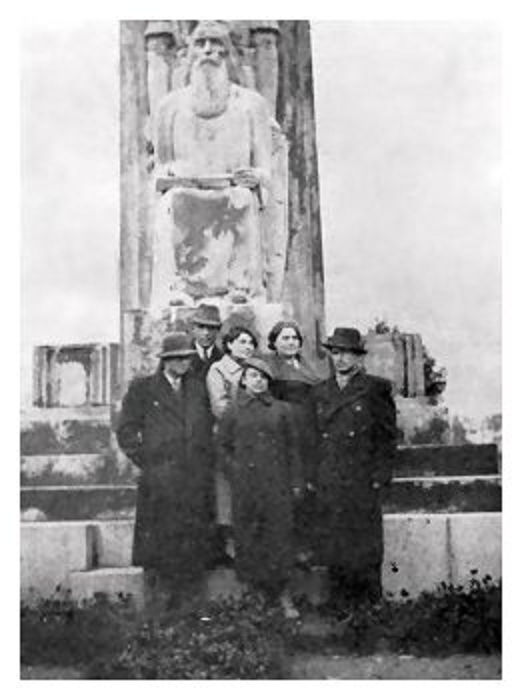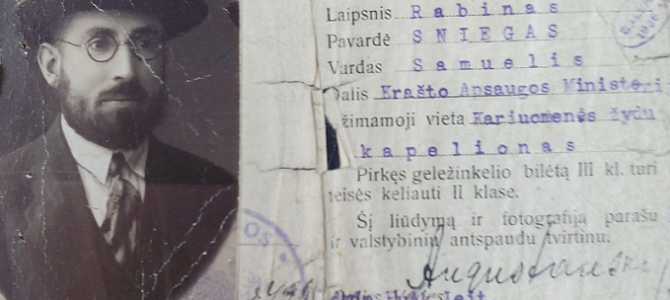by Geršonas Taicas
Shmuel Abba Sniegas was born in Rokiškis [Rokishyok] in 1878. He attended a Jewish primary school and completed the Kneses Israel yeshiva in Slobodka (now the Vilijampolė neighborhood of Kaunas) in 1913. He was deported to the Pskov guberniya in Russia during World War I. He began working as a rabbi in 1916.

Rokishyok in the early 20th century
Sniegas’s talents and abilities were noticed even in school and his classmates called him a sage, the Gaon of Israel. It’s possible the boy earned the appellation of Jewish spiritual leader because his mother Eida Menkina was a great-great-grandchild of the Vilna Gaon.

Rokishyok in the early 20th century. Jewish bank on right.
In 1918 Sniegas came back to Lithuania and participated actively in the Jewish community. He was part of the first congress of Lithuanian Jewish communities and was a member of the Lithuanian Jewish Council. He worked at the Slobodka yeshiva.
Rabbi Sniegas participated in the battles for independence against the Poles from 1918 to 1920. The Lithuanian defense minister appointed Sniegas a military chaplain on July 1, 1926, with his main duties being to minister to the religious needs of Jewish soldiers. At that time he also actively participated in the newspaper of the Lithuanian military. Everyone was impressed by his flawless Lithuanian. His contemporaries long remembered Sniegas as a remarkable man who supported the idea of Lithuanian independence.

At the statue of Jonas Basanavičius in Rokishyok. Dr. Basanavičius was a founding father of the Lithuanian state and a leading cultural figure. He protested against the passage of a law annulling Jewish self-governance in 1924.
Rabbi Sniegas set up a Registration and Émigré Committee for Jewish refugees in late October of 1939 at the initiative of the Federation of Polish Jews in New York and with help from the Lithuanian Red Cross. He was one of the main organizers who helped around 6,000 Jews leave and save themselves using Chiune Sugihara’s transit visas for Japan and other countries.
Chaplain and chief rabbi of the Lithuanian military Shmuel Abba Sniegas received the Order of Lithuanian Grand Duke Gediminas, 4th degree, and the medal of Lithuanian independence for contributions to the Lithuanian state in the interwar period.
Rabbi Sniegas and his wife were imprisoned in the Kaunas ghetto in Slobodka in 1941 and he became one of the members of the Jewish council of elders there. His wife did not survive the horrors of the Holocaust. There was an attempt to rescue the rabbi using a passport and citizenship papers from El Salvador. Sniegas was moved from the Kaunas concentration camp to the Dauchau concentration camp complex in 1944.
German sources say Rabbi Sniegas secretly held a Passover celebration in the concentration camp in 1945. When American soldiers liberated the camp in April of 1945, the survivors set up a rabbinate with Rabbi Sniegas at its head.
Sniegas and Rabbi Roso prepared and published a new edition of the Babylonian Talmud after the war, according to the classical publication by the Romm brothers in Vilnius, the first publication of the Talmud in Europe after the Holocaust.
In 1954 or 1955 Sniegas went to Israel.
Rabbi Sniegas is buried in the honored second row next to the Jewish Temple (where the Wailing Wall is now). Rabbi Sniegas’s grave is on the Mount of Olives in Jerusalem.
His grave marker bears the inscription: “The famous Rabbi Shmuel Abba, son of the Rabbi Nekhemia Moshe Sniegas, born in Rakishok, Lita. Senior rabbi of the Munich community and rabbi to the students of the Slobodka yeshiva and the leader of the Jews of Lita, died in 1970.”
Jews believe when the Messiah comes the dead will arise beginning with the first row of graves.


